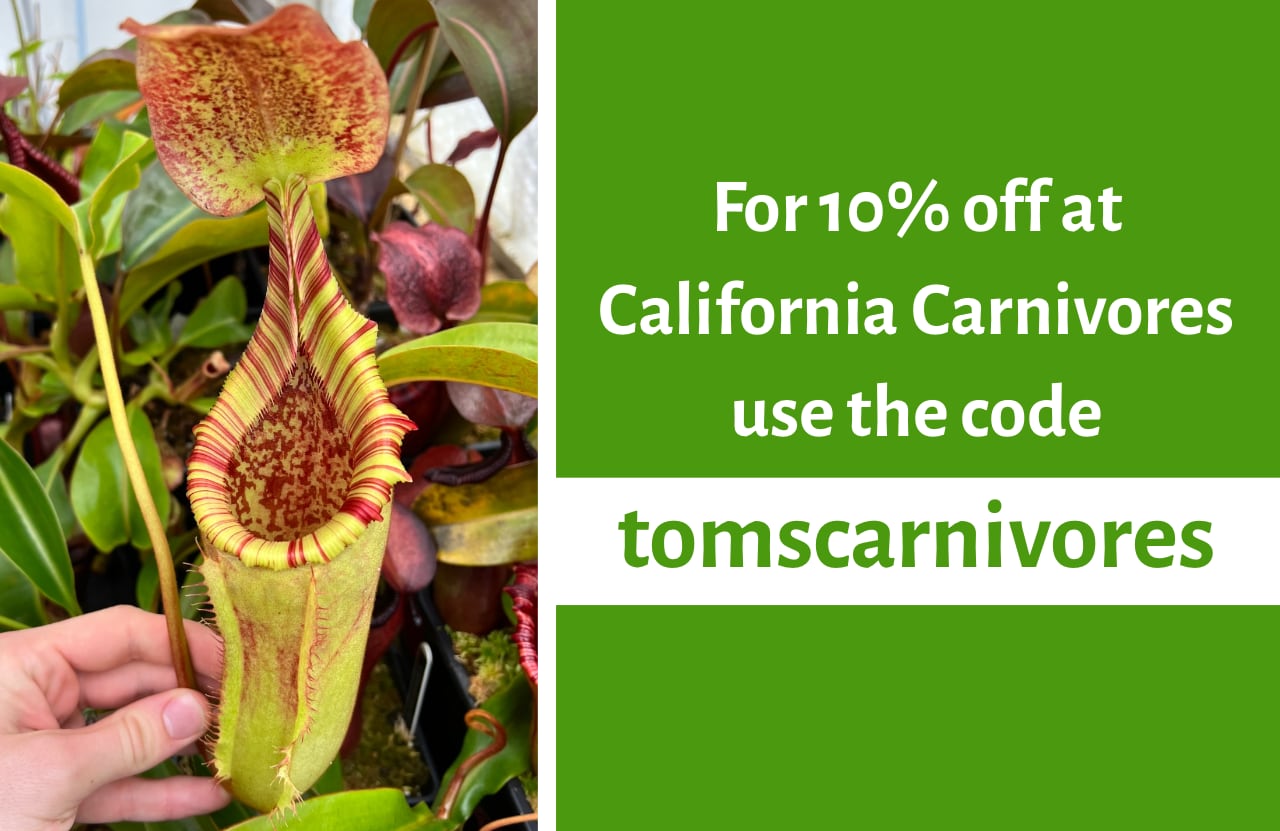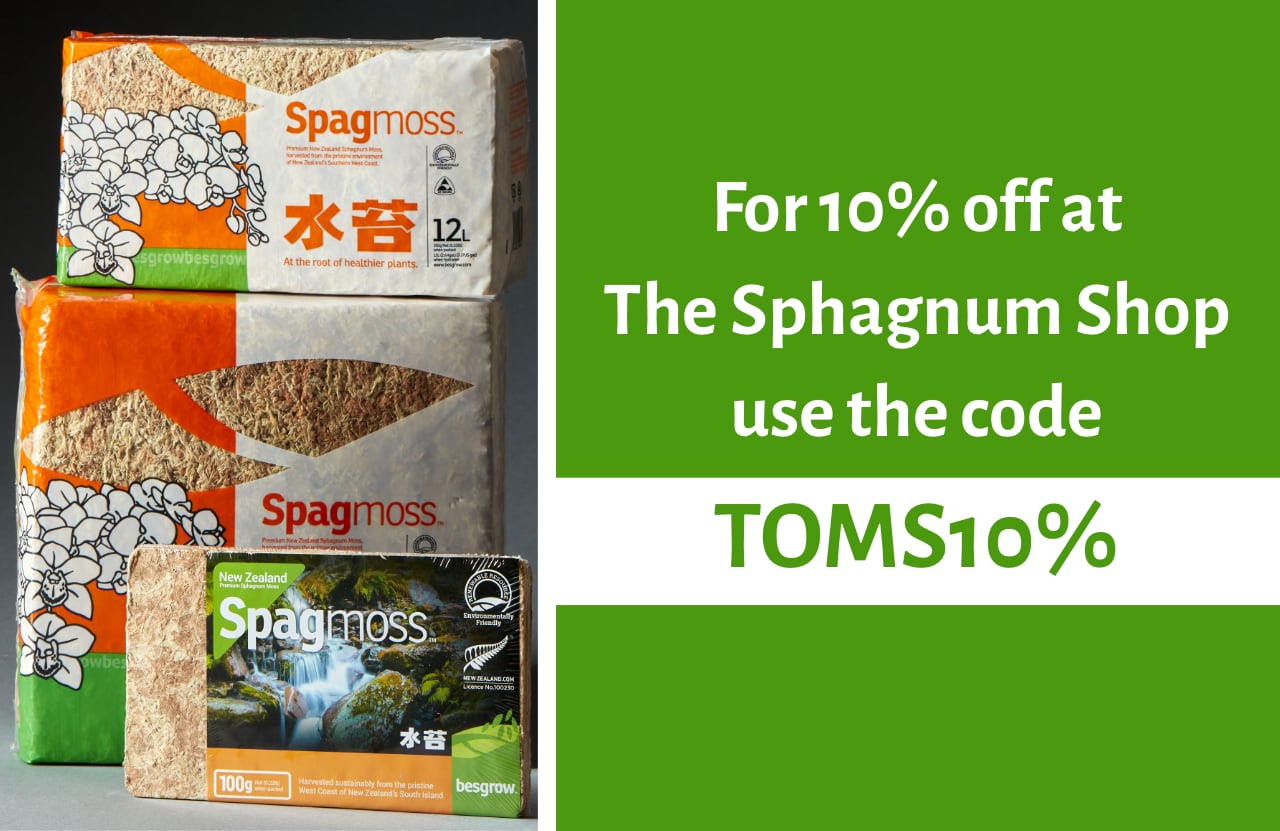Nepenthes lowii
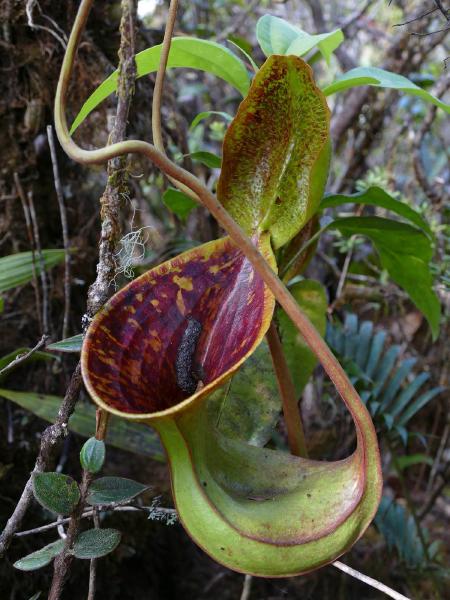 Upper pitcher in-situ on Mt Trusmadi, by François Mey
Upper pitcher in-situ on Mt Trusmadi, by François Mey
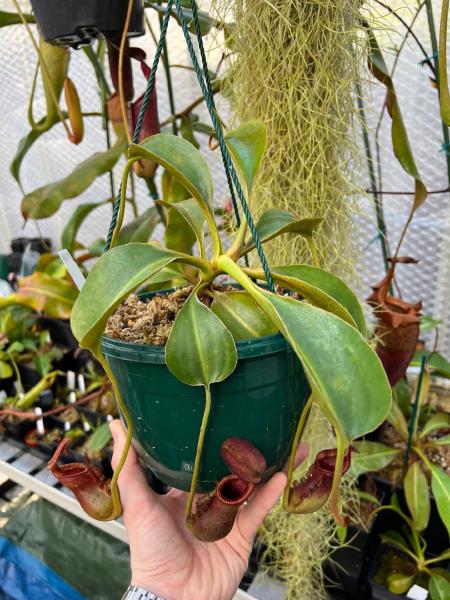 N. lowii from Mt Trusmadi - this one's from Wistuba
N. lowii from Mt Trusmadi - this one's from Wistuba
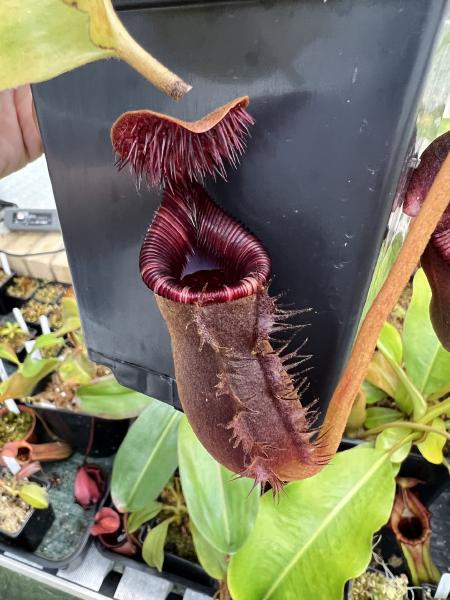 Lovely red lower pitcher on the Murud form of the species.
Lovely red lower pitcher on the Murud form of the species.
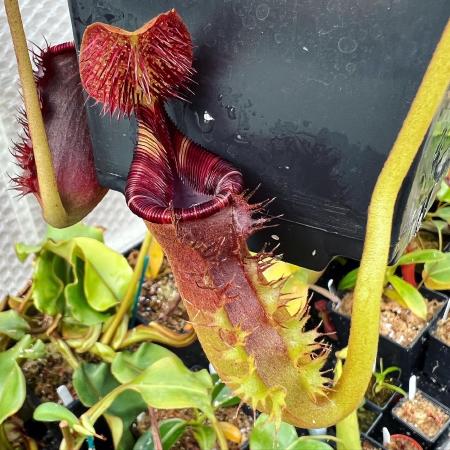 A lower pitcher. Look at those lid hairs!
A lower pitcher. Look at those lid hairs!
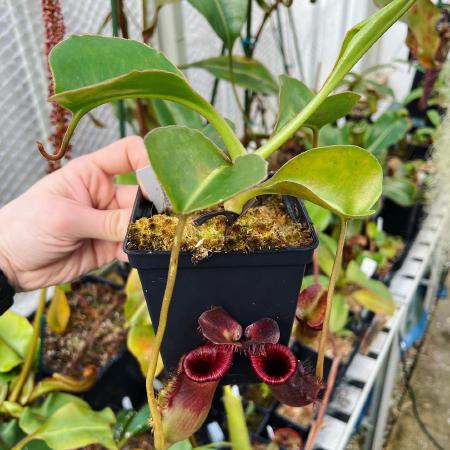 The Murud form of the species - this plant is 5 years old from seed.
The Murud form of the species - this plant is 5 years old from seed.
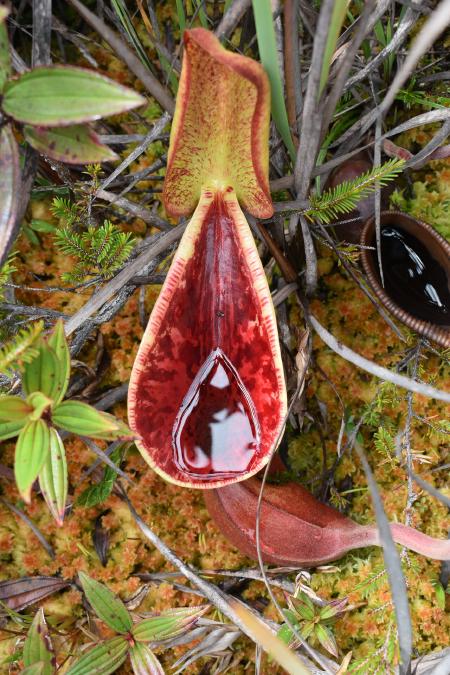 Upper pitcher in-situ on Mt Murud, by James Klech
Upper pitcher in-situ on Mt Murud, by James Klech
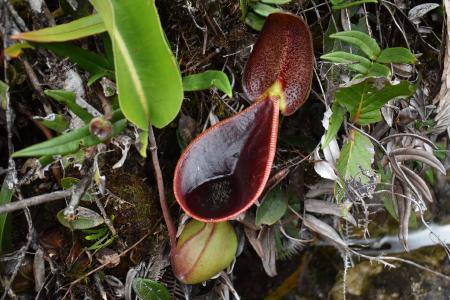 Upper pitcher in-situ on Mt Murud, by James Klech
Upper pitcher in-situ on Mt Murud, by James Klech
Description & Care
One of the classic highland Nepenthes species! Nepenthes lowii is endemic to Borneo, and it was discovered by - and named after - British naturalist Hugh Low in 1851. It grows on Mount Kinabalu, Mount Trusmadi, Mount Murud, Mount Mulu, and other isolated peaks throughout Sabah and Sarawak.
It’s famous for its strikingly different lower and upper pitchers (known as ‘dimorphic’). The lower pitchers are fairly small (about 10cm at most), usually a reddish-green color, have a striped peristome, and exhibit bristly hairs on the underside of the lid. The upper pitchers are much larger. They have a bulbous lower portion, a strongly constricted waist, and a then a wide gaping mouth with a vaulted lid held away from the pitcher. They are typically green with a blood-red interior, and are very rigid - almost woody - in texture.
The upper pitchers produce copious amounts of a sweet, white substance called exudate on the lids. Recent observations in the wild have confirmed this is actually bait! But not in the way you might think. Tree shrews aren’t the prey - instead, they feed on the exudate and their droppings fall into the pitcher. That’s right: Nepenthes lowii has largely moved away from carnivory and instead gets its nutrients from animal poo. Similar adaptations can be seen in N. rajah and N. macrophylla.
In my experience N. lowii is a very slow grower, until it gets to about 25cm diameter at which point it takes off! It often produces one or two intermediate pitchers before it starts making true upper pitchers. Even once they’re large, N. lowii typically produce few roots compared to most other Nepenthes species. It’s a steady and reliable grower in typical highland conditions (see below for my temperature recommendations).
I should also mention that it makes excellent hybrids! It tends to pass its striped peristome, robust pitchers, and distinctive funnel-shaped uppers onto its offspring. Highly recommended for every highland collection.
How I Grow It
| Media | Long fibre sphagnum moss, perlite, and - optionally - orchid bark (2:1:1) |
|---|---|
| Water | Damp but not wet |
| Light | Very bright, diffused light |
| Fertilizer | Maxsea or liquid orchid feed in the pitchers, every two weeks |
| Temperature | 12°C (54°F) minimum year-round, with summer highs of ~ 30°C (86°F) |
| Humidity | 70% during the day, rising to over 90% at night |
Learn more about cultivation with my guide to growing Nepenthes.
Day & Night Temperatures
Nepenthes lowii is a highland species, found at elevations of between 1650 and 2600 meters. This range is highlighted in orange above, and equates to temperatures of approximately 19 - 27°C (66 - 80°F) during the day, and 9 - 17°C (48 - 62°F) at night.
See Also
I've written profiles of the following hybrids involving Nepenthes lowii:
Habitat
| Native to | Borneo |
|---|---|
| IUCN Red List status | Vulnerable |
| Natural hybrids | N. fusca, N. macrophylla, N. mollis, N. muluensis, N. rajah, N. stenophylla, N. veitchii |
Where to Buy
| Availability | Plenty of availability in tissue culture, but hard to find large plants due to its slow pace of growth. |
|---|---|
| Borneo Exotics codes |
|
